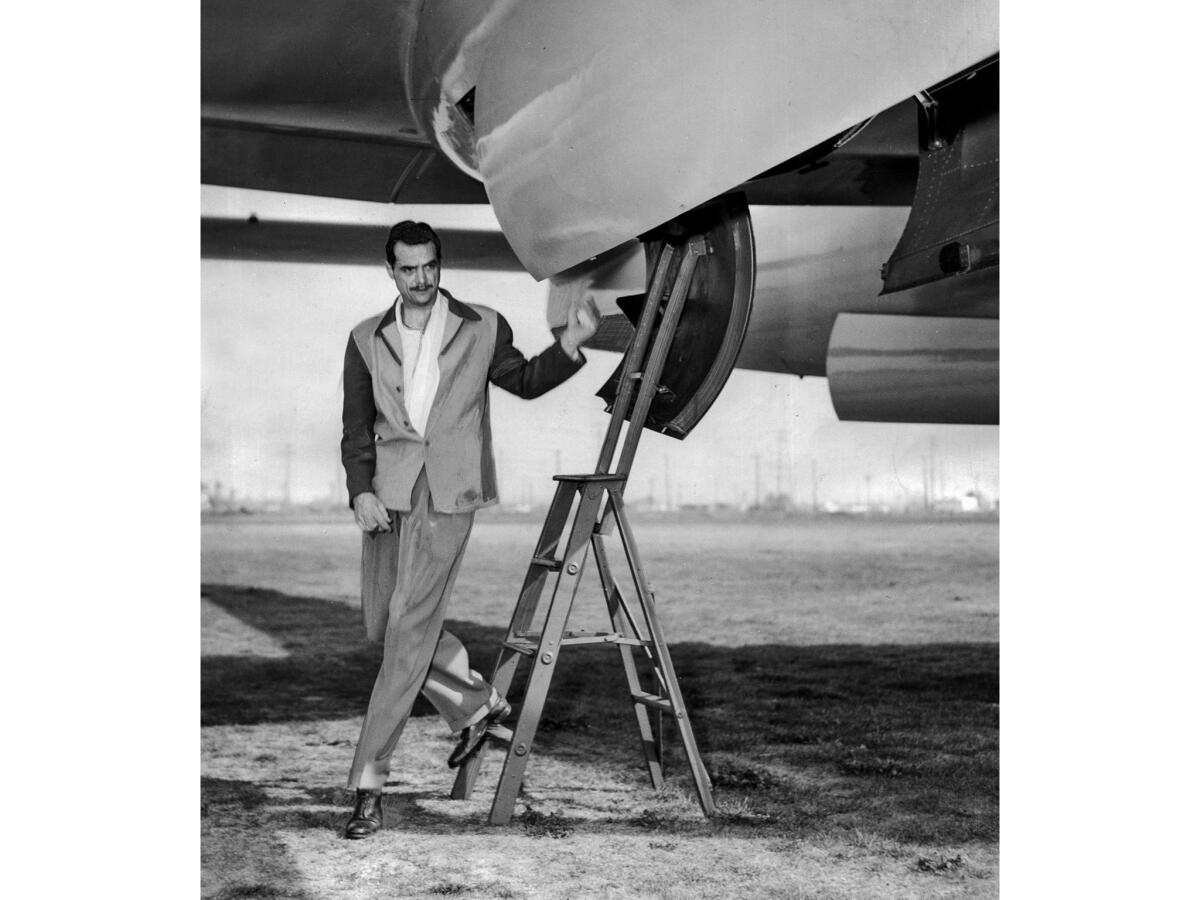From the Archives: Howard Hughes is injured in 1946 plane crash
- Share via
During World War II, the Hughes Aircraft Co. received a U.S. Army Air Forces contract for 100 F-11 reconnaissance aircraft. But in May 1945, the contract was canceled. Hughes Aircraft was allowed to complete two XF-11 prototypes.

On July 7, 1946, Howard Hughes took the first prototype on its maiden flight – and crashed. The Los Angeles Times reported the next morning:
Howard Hughes, millionaire airplane manufacturer, oilman, motion-picture producer and one of the most famous civilian pilots aviation has ever known, was injured critically yesterday when he crashed in Beverly Hills while flying his experimental Army photographic plane on its maiden flight.
Hughes, doing his own test-hopping, appeared to have tried to reach the Los Angeles Country Club golf course on which he apparently intended to crash-land the twin-engine airplane.
According to actor Dennis O'Keefe, who witnessed the entire episode from his home at 802 N. Linden Drive, the plane appeared to have been flying at an extremely low altitude, judging from the sound of the approaching engines.
Hughes fell about 300 feet short of the golf course, however, in this treetop-clipping attempt. The gigantic photographic plane, both of its powerful engines whining, tore more than half the roof from a two-story dwelling at 803 N. Linden Drive, occupied by Dr. Jules Zimmerman, a dentist.
Simultaneously, the plane's right wing sliced through the upstairs bedroom of the home next door to Zimmerman's at 805 N. Linden Drive, narrowly missing the occupants, Jerry De Kamp and his wife Elizabeth, who were in the room at the time.
Caroming off the garage in the rear of the De Kamp residence, the XF-11 continued its swath of devastation, slicing through a line of poplar trees bounding the rear of 808 Whittier Drive, the home of Lt. Col. Charles A. Meyer, interpreter at the war crimes trials in Europe, and burst into flames as it crashed into the Meyer home.
One of the plane's tremendous radial engines, torn from its mounts by the impact, hurtled more than 60 feet through the air, passing through the Meyer home, tearing a gash through the corner of a home at 810 Whittier Drive, owned by Gosta B. Guston, a retired Swedish industrialist, and finally came to rest on the Guston lawn.
Hughes was saved from death as the plane exploded into flames by Marine Sgt. William Lloyd Durkin, stationed at the El Toro Marine Base, and Capt. James Guston, 22, son of the industrialist and recently released from the Army. ...
At 5:25 p.m. yesterday, the XF-11, with Hughes alone at the controls, lifted easily under the pull of its two eight-bladed counter-rotating propellers. A handful of company officials and newspapermen watched the latest Hughes creation. One hour and 18 minutes later, the ship was a mass of junk which attracted an estimated throng of 8,000 persons to watch its cremation….
After being taken to the Beverly Hills Emergency Hospital, Hughes was given a "50-50" chance to live. He survived.
On April 5, 1947, Hughes flew the second XF-11 prototype on its first test flight. Seven months later, on Nov. 2, 1947, Hughes piloted the Spruce Goose in its first and only flight.
This post was originally published on July 6, 2013.




Sign up for The Wild
We’ll help you find the best places to hike, bike and run, as well as the perfect silent spots for meditation and yoga.
You may occasionally receive promotional content from the Los Angeles Times.



